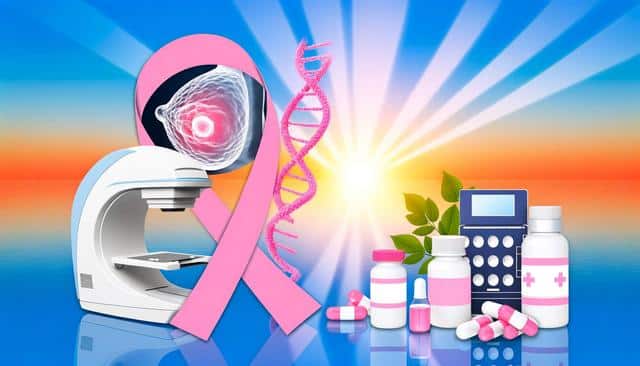Standard Treatment Approaches
The traditional treatment route for TNBC involves a combination of surgery, radiation, and chemotherapy. Surgery is often the first step, aiming to remove the tumor. This may involve a lumpectomy or mastectomy, depending on the size and location of the cancer. After surgery, radiation therapy is used to kill any remaining cancer cells in the breast, chest wall, or axillary lymph nodes.
- Neoadjuvant chemotherapy: Often administered before surgery to shrink tumors.
- Adjuvant chemotherapy: Given post-surgery to eradicate residual disease.
- Platinum-based agents: Frequently used due to their efficacy in TNBC cases.
These methods are foundational to a comprehensive strategy against TNBC, working to reduce recurrence rates and improve survival outcomes.
Emerging Therapies
Recent advancements have propelled the exploration of novel therapies for TNBC, with immunotherapy gaining significant attention. Immunotherapy aims to enhance the body’s immune response to cancer cells. One such approach involves immune checkpoint inhibitors, which have shown promise by targeting specific proteins on cancer cells and immune cells that prevent the immune system from attacking the cancer.
- PD-1 and PD-L1 inhibitors: These drugs help the immune system recognize and attack cancer cells.
- PARP inhibitors: Used effectively in patients with BRCA1 or BRCA2 mutations.
- Targeted therapies: Strategies being trialed to disrupt cancer cell pathways.
The development of these therapies is ongoing, offering optimism for improved TNBC management.
Personalized Medicine
As understanding of genetic differences in cancer cells improves, personalized medicine has become a crucial component in TNBC treatment. Genetic profiling allows doctors to tailor treatments based on the specific characteristics of an individual’s cancer. This precision approach involves identifying mutations and tailoring drugs to target those specific abnormalities.
Such personalization can optimize the effectiveness of treatment and minimize side effects. It marks a shift from the one-size-fits-all model to a more targeted and efficient strategy.
Support and Resources
Facing TNBC involves more than just medical treatment. Access to support networks and resources is vital for patients and their families. Support groups, both in-person and virtual, provide a platform for sharing experiences and coping strategies. Educational resources offer updated information and help patients make informed decisions about their treatment paths.
- Support groups: Connect with others who understand and share similar experiences.
- Educational materials: Provide up-to-date information and guidance on TNBC.
- Psychosocial support: Access to counseling and mental health professionals.
These resources empower those affected by TNBC, fostering a supportive community and enhancing quality of life throughout treatment and beyond.

